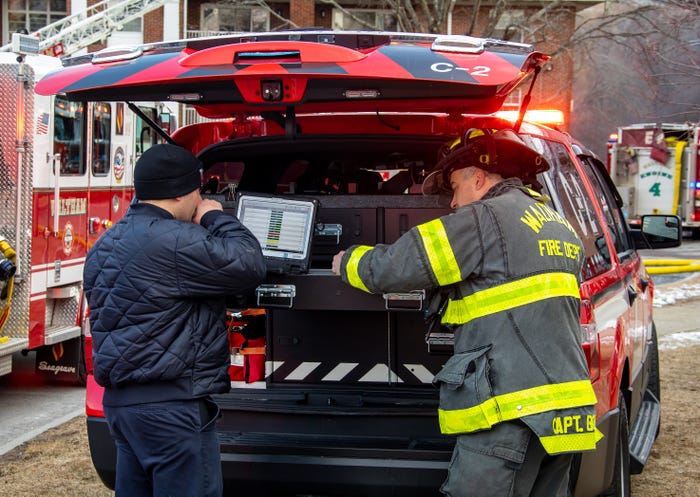APCO releases NG911 guide, quickly clarifies stance on NENA’s i3 standard

ANAHEIM—At its annual trade show, the Association of Public-Safety Communications Officials (APCO) yesterday announced the release of its “Definitive Guide to Next-Generation 911” and, hours later, issued a press release to clarify its position on the i3 standard developed by the National Emergency Number Association (NENA).
APCO International Executive Director and CEO Derek Poarch announced the release of the “Definitive Guide to Next-Generation 911” (available here) in his opening remarks during opening general session of the APCO 2022 event. The NG911 guide “encourages readers to set aside outdated thinking and consider technological trends and opportunities to meet public safety’s fundamental requirements including interoperability, end-to-end functionality, cybersecurity, and reliability,” according to the APCO website.
However, the 179-page NG911 guide from APCO includes only 13 mentions—in just four paragraphs—of i3, the NENA standard that is most commonly cited when 911 jurisdictions procure the IP networking system that is the foundation of NG911.
“An i3-based system provides for the delivery of emergency calls through an IP-based network utilizing SIP,” the APCO guide states. “By its very nature, i3 does not describe a complete NG911 system.”
If a state depends solely on a specific standard or technology to define NG911, it may “inadvertently limit innovation” in the NG911 ecosystem, according to the APCO guide. And the approaches taken by states can vary dramatically, the APCO guide states.
“For example, several states define NG911 to mean 911 service that conforms to NENA’s i3 standards. This approach can be detrimental, because it is too narrow,” according to the APCO NG911 guide. “NENA’s i3 focuses on architectural elements and processes rather than required operational capabilities and is limited to call delivery and handling, thereby leaving unaddressed what capabilities a complete NG911 system must provide.
“This leads to some jurisdictions equating ESInet deployments and other i3-branded elements as constituting ‘NG911.’ In contrast, some states, have adopted a flexible definition that describes an operational capability and is closer to a comprehensive description. Yet other states do not define NG911 in legislation at all.”
In other areas of the APCO NG911 guide, it notes a National 911 Program Office statement that “using NENA’s i3 standard alone is not the same as an NG911 system,” and some model procurement language in the guide states that “reliance on i3 alone is not the same as an NG911 system.”
In the past, there has been some disagreement between officials for APCO and NENA regarding the appropriate role for the i3 standard, particularly as it has related to language regarding potential federal legislation that could provide as much as $10 billion or $15 billion to fund a nationwide transition to NG911.
Yesterday afternoon, APCO released the following statement in an effort to clarify its position on the matter.
“Today, APCO released its ‘Definitive Guide to Next Generation 911,’” according to the APCO statement. “Following release, and during a previously scheduled meeting, APCO’s Executive Committee and NENA’s Executive Committee discussed areas of collective interest, including the Guide.
“During this meeting, NENA raised the question as to verbiage in the Guide related to i3. In the spirit of continued cooperation between elected officials of both associations, APCO makes clear there is no intent to suggest i3 should not be used or does not have a role. The Guide points out that NG911, when deployed in a comprehensive, end-to-end manner, may include i3 as a component.”





